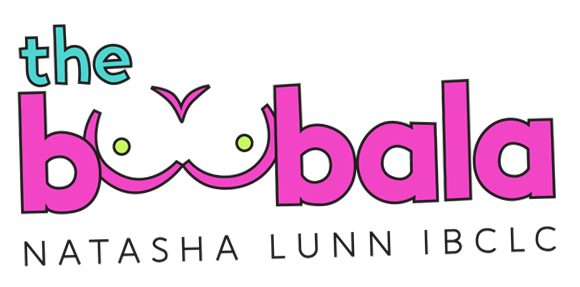Page Content [show]
Understanding Baby Movement During Breastfeeding
Breastfeeding is a profound bonding experience between a mother and her baby, but it often comes with its own set of challenges, one of which is the noticeable movement of babies while nursing. This behavior can be puzzling for new mothers, leading to questions about its causes and implications.
Natural Instincts and Comfort
One of the primary reasons babies move so much while breastfeeding is rooted in their natural instincts. Infants are born with a strong reflex to suck, which is essential for feeding. However, as they nurse, they may also exhibit various movements such as squirming, twisting, or pulling away. These actions can be attributed to their need for comfort and security during feeding sessions. Babies often fidget as they seek the most comfortable position or adjust their latch to ensure they are getting enough milk.
Stimulating Milk Flow
Another significant factor is the baby’s instinct to stimulate milk flow. Many babies will fuss or squirm at the beginning of a feeding session as a way to encourage the mother’s milk supply. This behavior can include kneading the breast with their hands or pulling at the nipple, which can help trigger the let-down reflex, allowing milk to flow more freely. This instinctual behavior is particularly common in younger infants who are still learning the mechanics of breastfeeding.
Distractions and Exploration
As babies grow, their awareness of the world around them increases, leading to more distractions during feeding. They may become easily intrigued by sounds, movements, or even the mother’s face, causing them to pull away or twist while nursing. This exploration is a normal part of their development, as they begin to engage with their environment. The combination of hunger and curiosity can lead to a restless feeding session, where the baby is torn between the need to eat and the desire to explore.
Physical Development and Coordination
As babies develop their motor skills, their movements during breastfeeding can also reflect their growing physical abilities. They may kick their legs, wave their arms, or even turn their heads to look around. This increased mobility is a sign of their developing coordination and strength, which can sometimes make feeding a more dynamic experience.
Conclusion
In summary, the movement of babies while breastfeeding is a multifaceted behavior driven by instinct, comfort-seeking, stimulation of milk flow, and a growing curiosity about their surroundings. While it can be challenging for mothers, understanding these movements can help in navigating the breastfeeding journey with greater ease and patience. Embracing these moments as part of the natural process can enhance the bonding experience between mother and child, making each feeding session unique and special.
Why does my newborn squirm so much while breastfeeding?
Wind is common from the newborn stage to about 3 months, as your baby’s digestive system matures. Common signs of trapped wind include: squirming or crying during a feed. looking uncomfortable and in pain if laid down after feeds.
Why is my baby so wiggly while bottle feeding?
Why does my baby squirm during feeding? Baby may need to burp. Wiggling and squirming are signs of a burp. Fast feeding or pulling off the breast can also indicate a need to burp. Your baby may squirm during feeding due to oral dysfunction, which can be related to tongue ties.
How to tell if baby is comfort nursing?
Your baby is only nursing for comfort nursing when you see these signs:
- Flutter sucking, slowing down, stop sucking, or making little sucks.
- Still and looking into space while nursing.
- Holding the nipple in their mouth but not sucking for milk.
- Rooting and sucking lightly at the breast.
- Arching and grabbing ears.
Is it normal for babies to move a lot while breastfeeding?
If nursing is not the calm bonding you were expecting, don’t worry. Some squirming is normal, but if your baby is especially active and squirmy during feedings, it could indicate that they are frustrated.
Why is my baby so fidgety when breastfeeding?
Sometimes, your milk lets down so fast that your baby can have trouble swallowing the amount of milk that’s being released. Because of this, your baby may act fussy at breast or choke and sputter at the breast, and he or she may be quite gassy.
Why is my baby flailing arms and legs while breastfeeding?
For the baby, they feel like they are falling away from the person they most want to be next to – and then because they are unstable, they do things that make latch harder – flailing their arms, “breast boxing”, crying, head bopping, shaking their head back and forth, kicking their legs, arching away, and so much more.
What if baby doesn’t burp and falls asleep?
What to do in this case? A: If your baby falls asleep before burping, gently try to burp them while they are still drowsy. If unsuccessful, it’s generally okay to let them sleep without forcing a burp. Ensure a comfortable sleeping position to prevent discomfort, and try burping after the next feeding.
Why does a baby kick legs while nursing?
A baby that feels like they are unstable will do many things that make latch harder – flailing their arms, “breast boxing”, crying, head bopping, shaking their head back and forth, kicking their legs, arching away, and so much more.
Why is my baby so restless when feeding?
Unsettled feeding
If your baby is unsettled at the breast and doesn’t seem satisfied by feeds, it may be that they are sucking on the nipple alone. This may mean they are not getting enough milk. Ask for help to get your baby into a better feeding position.
Why does my baby pull and tug while breastfeeding?
After the initial newborn period, older babies (e.g. 3/4/5 months) can start to become very distracted and pull at the breasts because they are interested in the world – not because there is anything wrong with the breast or breastmilk.

